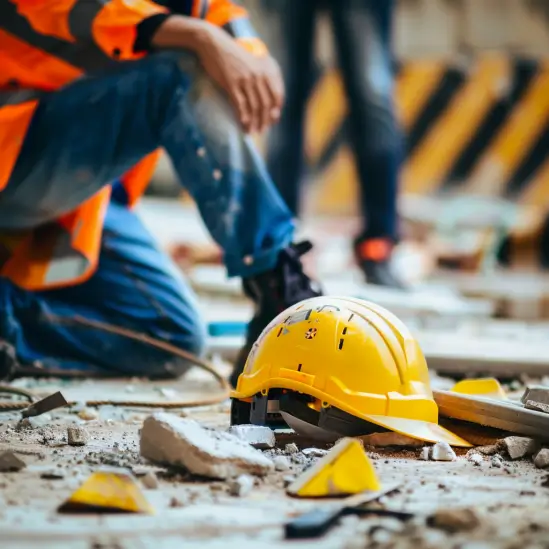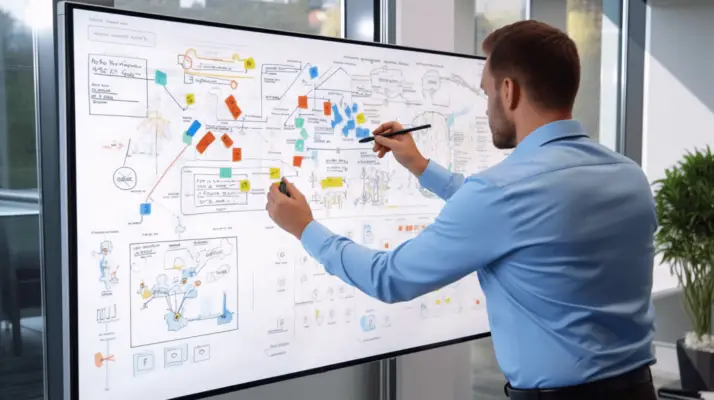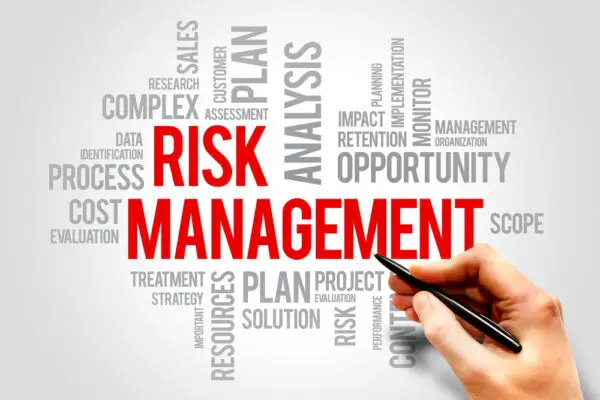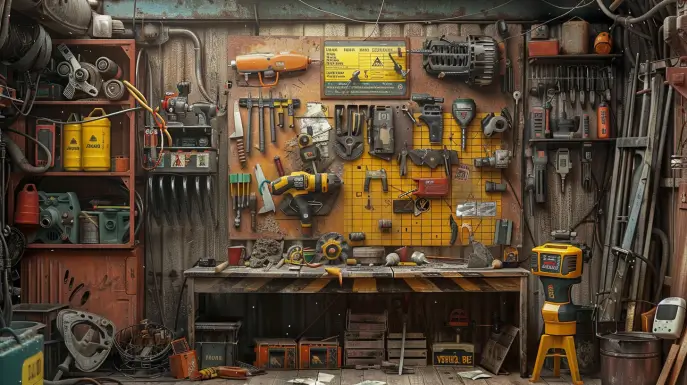A tool risk assessment helps you identify hazards and rate their likelihood and impact. It uses risk matrices and decision trees to prioritize actions.
Assessments involve reviewing existing controls and engaging with stakeholders to create a proactive culture in hazard management. Having a clear action plan ensures recommendations are actioned, and regular reviews keep the assessment alive.
The best practice is continuous monitoring and employee involvement to keep the workplace safe. This systematic approach will reduce risks and prepare your team for what’s around the corner. Find out more to learn more about hazard management.

Summary
- Use a risk matrix to score and visualise the hazards associated with tool use in the workplace.
- Get stakeholders and experts involved to ensure all risks related to tools and equipment are evaluated.
- Put in place controls and safety measures based on the risks to reduce injuries and incidents.
- Review and update risk assessments regularly to new tools, processes and emerging hazards.
- Create a safety culture by involving employees in risk assessments and getting feedback on tool safety.
What is Risk Assessment
Risk assessment helps you identify hazards and rate their likelihood and impact so you can manage and mitigate risks. It’s essential to understand the consequences of different hazards, including human and technological risks.
By identifying hazards you can prioritise actions based on severity of injury severity and likelihood of occurrence. Using a risk matrix tool helps you visualise risks and comply with safety regulations.
Plus you can implement strategies to reduce vulnerabilities in building design, process systems and security measures.
In the end this proactive approach will protect your assets and get the workplace safe for employees and stakeholders by addressing risks before they cause harm.
Risk Assessment Tools and Methods
Risk assessment tools and methods make it easier to identify, analyse and prioritise hazards.
The risk matrix will visualise the risks so you can prioritise managing risks and decide on the safety measures.
The decision tree will calculate and visualise the likelihood of different outcomes and help with risk management.
Failure modes and effects analysis tool (FMEA) will identify potential problems or failures that happen in different processes so you can take proactive action.
Plus the bowtie model will show the causal links between risk sources and their consequences so you can see the risk.
Risk Assessment with Risk Assessment Tools
Risk assessment involves identifying potential hazards beforehand, rating the probability or the likelihood and rating the impact.
Risk assessments use risk assessment tools to identify potential hazards and prioritise risks. These tools will evaluate the probability of an event and the severity of the outcome.
Get stakeholders and subject matter experts involved throughout this process to get a thorough evaluation of quality through. By reviewing existing quality controls you can identify areas for improvement.
This systematic approach will get businesses around you safer and create a pro active culture in hazard management. In the end you want to reduce risks and protect people by making informed decisions based on thorough assessments.
Implementing and Reviewing Risk Assessments
To implement and review risk assessments you need a clear action plan that addresses the risks and specific recommendations. This plan should have regular reviews and updates of the risk assessment to keep it alive.
By using risk assessment tools you can measure your progress and identify areas for improvement. Continuous monitoring is important to evaluate the effectiveness of risk assessments and risk management.
Organisations across industries must be proactive in addressing new or emerging hazards so their risk management practices keep up with the changing threats. A systematic approach to reviewing risk assessments will help organisations get better and keep the organization and workplace safer.

Top Tips for Hazard Management
Risk based hazard management will help you identify and prioritise risks better.
By managing risks and using risk assessment tools you can systematically identify hazards and prioritise risks based on injury severity and their impact.
Developing and implementing controls is key to mitigating the risks, get the workplace safer.
Continuous monitoring of these controls will allow you to evaluate and adjust.
Plus you need to be proactive in identifying new or emerging risks through regular tool assessments and harm analysis.
This will get you a quality environment where hazards are managed and safety and compliance is the organization’ top priority.
By following these top tips you will be able to get risks under control and maintain hazard management.
Keeping the Workplace Safe through Continuous Improvement
Regularly reviewing risk assessments and getting employees involved is key to keeping the workplace safe through continuous improvement.
Organisations and industries must use safety tools to identify emerging health risks and get risk management right.
Employee involvement is important in this process; their input will highlight areas to focus on and create a more health and safety culture.
Plus an organisational risk assessment tool will help you evaluate your current hazard management practices and identify potential hazards.
By monitoring compliance and evaluating these strategies you can create opportunities for improvement and get the workplace safe.
Regularly reviewing risk assessments will address existing hazards and prepare the team for future challenges, get a pro active approach to risk management and safety improvement.
FAQs
What Qualifications Should a Risk Assessor Have?
A risk assessor should have relevant qualifications, degree in safety management or engineering, risk assessment certification and practical experience. They should know the regulations, hazard identification process and effective risk mitigation strategies.
How Often Should Risk Assessments Be Reviewed?
He recommends risk assessments should be reviewed regularly, ideally annually or when changes occur. This will ensure they are current, reflective of current practices and hazards and a safe and compliant environment for everyone involved.
Who Implements Risk Assessment Recommendations?
In any organisation management will implement risk assessment recommendations. They will ensure employees are trained, resources are allocated and changes are made to get safety and reduce risks better.
What Are the Consequences of Not Doing Risk Assessments?
Not doing risk assessments can result to legal liabilities, fines and lawsuits. Organisations may face regulatory penalties and individuals injured due to negligence may claim compensation, resulting to financial and reputational damage to the company, organisation and the individuals involved.
How Do You Train Employees in Hazard Recognition?
Employees can be trained in hazard recognition through hands on workshops, interactive training sessions and regular safety drills. This will increase their awareness so they can identify risks and respond accordingly in different situations.

Summary
In summary tool risk assessment is key to managing hazards.
By understanding risk assessment, using the right tools and following best practice you will get safety.
Regular reviewing will get continuous improvement and adaptation to new challenges.
In the end a pro active approach to hazard management will protect employees and create a safety culture in the workplace.
Get these right and you will get a safer, better

Chris Ekai is a Risk Management expert with over 10 years of experience in the field. He has a Master’s(MSc) degree in Risk Management from University of Portsmouth and is a CPA and Finance professional. He currently works as a Content Manager at Risk Publishing, writing about Enterprise Risk Management, Business Continuity Management and Project Management.

